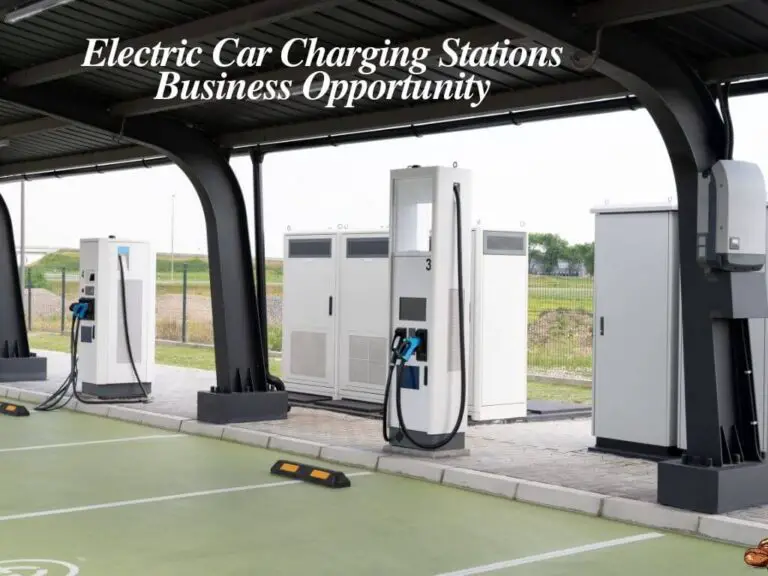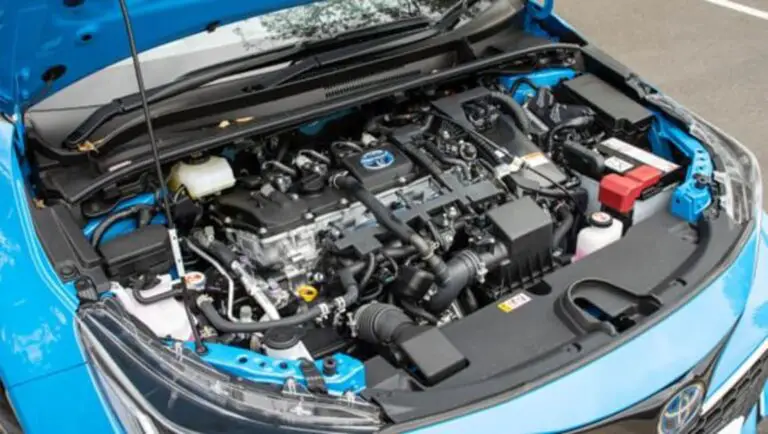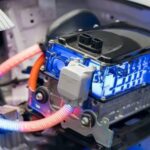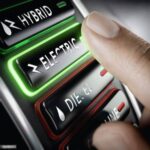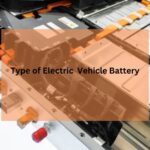High voltage components in an electric vehicle include the high voltage battery, electric motor, generator, compressor, inverter, heater, and air conditioner. These components are part of the high voltage electric system that powers the vehicle.
What Components of an Electric Vehicle are Considered High Voltage? Proper handling and safety precautions must be taken when working with or repairing these components. It is important to recognize and identify the high voltage circuits and components in an electric vehicle to ensure safe operation and maintenance.
High Voltage Battery: Storing Electric Energy Efficiently
Electric vehicles have several high voltage components, including the electric motor, battery pack, inverter, and onboard charger. These components are responsible for storing and efficiently using electric energy in the vehicle. Proper handling and safety measures are crucial when working with high voltage systems in electric vehicles.
When it comes to electric vehicles (EVs), one of the most crucial components is the high voltage battery. Serving as an efficient energy storage unit, the high voltage battery plays a critical role in powering the vehicle’s electric motor and other components. Let’s delve into the role and importance of the high voltage battery in electric vehicles.
Role Of High Voltage Battery In Electric Vehicles
The high voltage battery has a vital role to play in the overall functioning of an electric vehicle. Its primary function is to store electrical energy efficiently, allowing the EV to travel long distances without the need for frequent recharging. This battery acts as a powerhouse, supplying electricity to the electric motor, which in turn propels the vehicle forward.
Additionally, the high voltage battery is connected to various components within the EV’s high voltage electric system, such as the generator, compressor, inverter, heater, and air conditioner. These components rely on the stored energy in the high voltage battery to perform their respective functions effectively.
Importance Of High Voltage Battery For Efficient Energy Storage
The high voltage battery is crucial for ensuring efficient energy storage in electric vehicles. Its ability to store and deliver electrical energy at high voltages allows for a more extended driving range and improved overall performance. Here are a few reasons highlighting the importance of the high voltage battery:
- Extended driving range: A high voltage battery with efficient energy storage capabilities enables electric vehicles to travel longer distances on a single charge. This feature enhances the practicality and convenience of EVs, addressing the range anxiety concerns of potential buyers.
- Optimal power delivery: The high voltage battery’s ability to store energy efficiently ensures a consistent and reliable power supply to the electric motor. This translates into smooth acceleration, optimal performance, and enhanced drivability.
- Reduced charging time: With an efficient high voltage battery, EV owners can enjoy shorter charging times. The battery’s higher power capacity and quick charging capabilities allow for faster replenishment of energy, minimizing downtime and maximizing driving time.
- Sustainable transportation: As electric vehicles gain popularity, the demand for sustainable transportation solutions increases. High voltage batteries contribute to this sustainability by storing electricity from renewable sources such as solar and wind power. This stored energy can then be utilized to power the EV, reducing carbon emissions and promoting a cleaner environment.
- Future-proofing electric vehicles: As the technology behind high voltage batteries advances, electric vehicles become increasingly future-proof. Upgrades in battery capacity, energy density, and charging speed allow for continuous improvement in EV performance and driving range, making them an attractive option for consumers.
The high voltage battery is a critical component of electric vehicles. Its efficient energy storage capabilities play a significant role in powering the electric motor and other components, ensuring optimal performance and extended driving range. Moreover, the importance of high voltage batteries in enabling sustainable transportation and future-proofing EVs cannot be overstated. With continuous advancements in battery technology, electric vehicles are set to become a dominant force in the automotive industry.
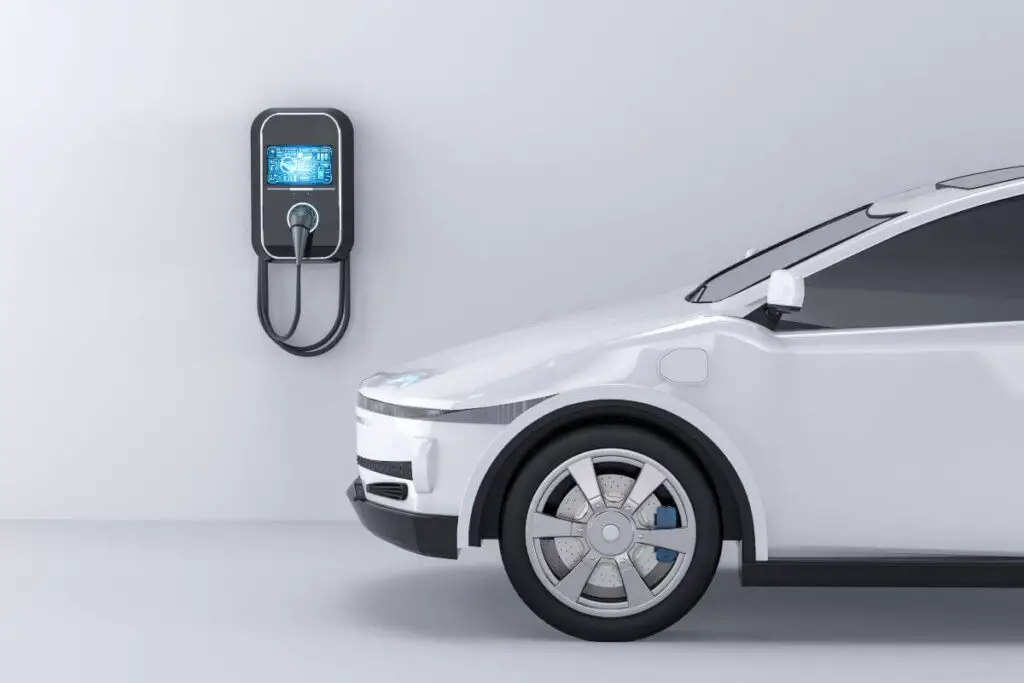
Electric Motor: Powering The Vehicle With High Voltage
High voltage components of an electric vehicle include the electric motor, battery pack, inverter, and onboard charger. These components are crucial for powering the vehicle and require careful handling and maintenance.
Role Of Electric Motor In An Electric Vehicle
The electric motor in an electric vehicle plays a crucial role in powering the vehicle and propelling it forward. Similar to the engine in a conventional gasoline-powered vehicle, the electric motor converts electrical energy into mechanical energy. However, unlike internal combustion engines, electric motors operate on high voltage to deliver efficient and powerful performance.
Understanding The Connection Between High Voltage And Electric Motor Efficiency
Electric motors in electric vehicles are designed to operate on high voltage for several reasons. One of the main advantages of high voltage is its ability to reduce power losses during the conversion process, which enhances the overall efficiency of the electric motor. The higher the voltage, the lower the current needed to deliver the required power to the motor, resulting in reduced resistive losses.
By operating at high voltage, electric motors can achieve higher power densities, meaning they can deliver more power in relation to their size and weight. This allows electric vehicles to have compact and lightweight motor systems without compromising on performance.
Furthermore, high voltage enables electric motors to generate higher torque, which translates to improved acceleration and better overall performance. The increased torque output at high voltage ensures that electric vehicles can compete with their gasoline-powered counterparts in terms of speed and acceleration.
In addition to efficiency and performance benefits, high voltage in electric motors also simplifies the overall vehicle design. Since high voltage allows for reduced current requirements, the wiring size and weight can be minimized, resulting in cost savings and better thermal management.
The electric motor in an electric vehicle plays a vital role in powering the vehicle with high voltage. By understanding the connection between high voltage and electric motor efficiency, we can appreciate the benefits it brings in terms of improved performance, efficiency, and overall vehicle design.
Inverter: Converting Power For High Voltage Components
High voltage components of an electric vehicle typically include the battery pack, electric motor, inverter, and onboard charger. These components play a crucial role in converting and managing power for the high voltage system of the vehicle.
Function Of The Inverter In An Electric Vehicle’s High Voltage System
The inverter plays a crucial role in an electric vehicle’s high voltage system. It is responsible for converting the direct current (DC) power from the battery into alternating current (AC) power. This AC power is then used to drive the high voltage components of the electric vehicle, such as the electric motor and other accessories.
How The Inverter Converts Dc Power To Ac Power For High Voltage Components
The inverter utilizes advanced power electronics technology to convert the DC power from the battery into AC power. It performs this conversion through a series of steps:
- Rectification: The inverter first rectifies the DC power, which means it converts it from a pulsating DC waveform to a stable DC voltage.
- Intermediate DC Bus: The rectified DC power is then fed into an intermediate DC bus, which acts as a buffer to smooth out any fluctuations in the power supply.
- Pulse Width Modulation (PWM): The inverter uses a technique called pulse width modulation to convert the intermediate DC power into high-frequency AC power. This involves rapidly switching the voltage on and off to create an AC waveform.
- Filtering: The AC power generated by the inverter is then passed through filters to remove any high-frequency noise or harmonic distortion.
- Output Stage: Finally, the filtered AC power is amplified to the desired voltage and frequency, suitable for driving the high voltage components of the electric vehicle.
By converting the DC power from the battery into AC power, the inverter ensures that the high voltage components of the electric vehicle receive the necessary electrical energy to operate efficiently. It enables the smooth and controlled delivery of power, enhancing the overall performance and driving experience of the electric vehicle.
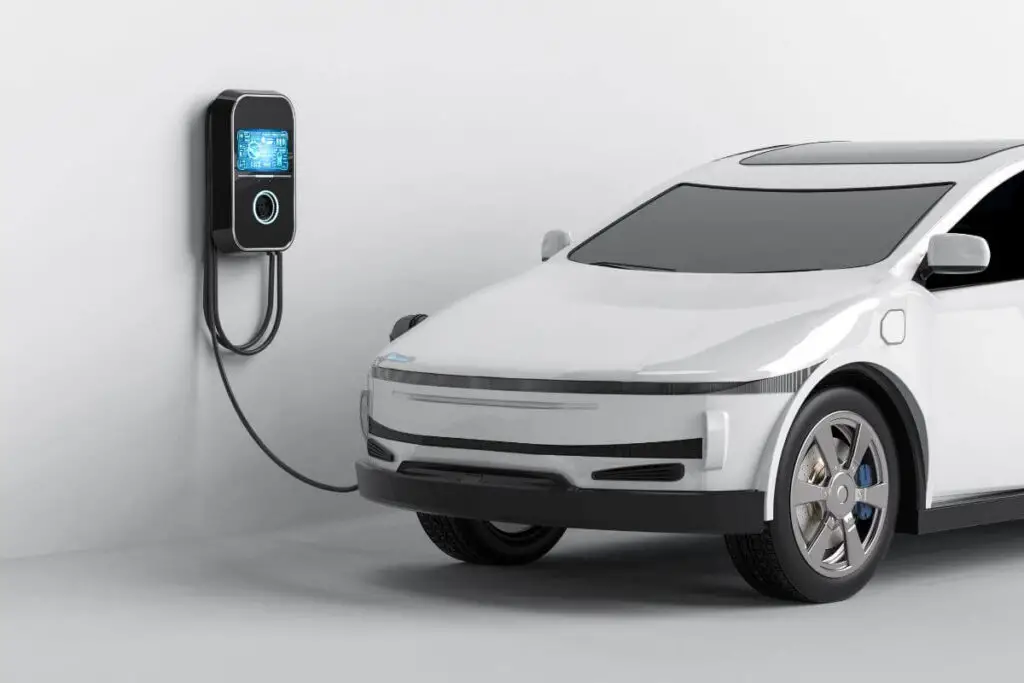
What Components of an Electric Vehicle are Considered High Voltage
The high voltage components of an electric vehicle include the battery pack, electric motor, inverter, and onboard charger. These components are essential for the vehicle’s operation and require careful handling and safety precautions.
Integration Of Heater And Air Conditioning Systems Into The High Voltage System
In electric vehicles, the heating and cooling systems are an essential part of providing comfort to passengers. These systems are integrated into the high voltage system, allowing for efficient utilization of energy. By integrating these systems into the high voltage system, the electric motor, generator, compressor, inverter, and other components can work together seamlessly, ensuring optimal performance and efficiency.
Ensuring Efficient Heating And Cooling While Utilizing High Voltage Components
Efficiency is a key consideration when it comes to heating and cooling systems in electric vehicles. By utilizing high voltage components, such as the electric motor and inverter, these systems can operate at their full potential, providing efficient heating and cooling capabilities.
One important aspect of ensuring efficient heating and cooling is the use of advanced temperature control algorithms. These algorithms monitor the temperature inside the vehicle and adjust the heating and cooling systems accordingly, optimizing energy consumption and comfort. With the integration of high voltage components, these algorithms can make use of the electric motor’s power and the inverter’s control capabilities to maintain the desired temperature.
Efficient Utilization Of High Voltage Components For Comfort
Electric vehicles have the advantage of utilizing high voltage components for both propulsion and comfort systems. This integration allows for the sharing of high voltage power, reducing the overall complexity and weight of the vehicle.
Additionally, the high voltage heating and cooling systems in electric vehicles can provide rapid and efficient heating or cooling, enhancing the overall comfort of the passengers. With the use of high voltage electric compressors, the air conditioning system can cool the cabin quickly, even in extreme temperatures.
The integration of heating and cooling systems into the high voltage system of electric vehicles allows for efficient utilization of energy and optimal comfort for passengers. By utilizing high voltage components such as the electric motor, generator, compressor, and inverter, these systems can work together seamlessly, ensuring efficient heating and cooling capabilities. The advanced temperature control algorithms make use of these high voltage components, optimizing energy consumption and providing rapid and efficient heating or cooling. Overall, electric vehicles provide a comfortable and sustainable transportation solution.
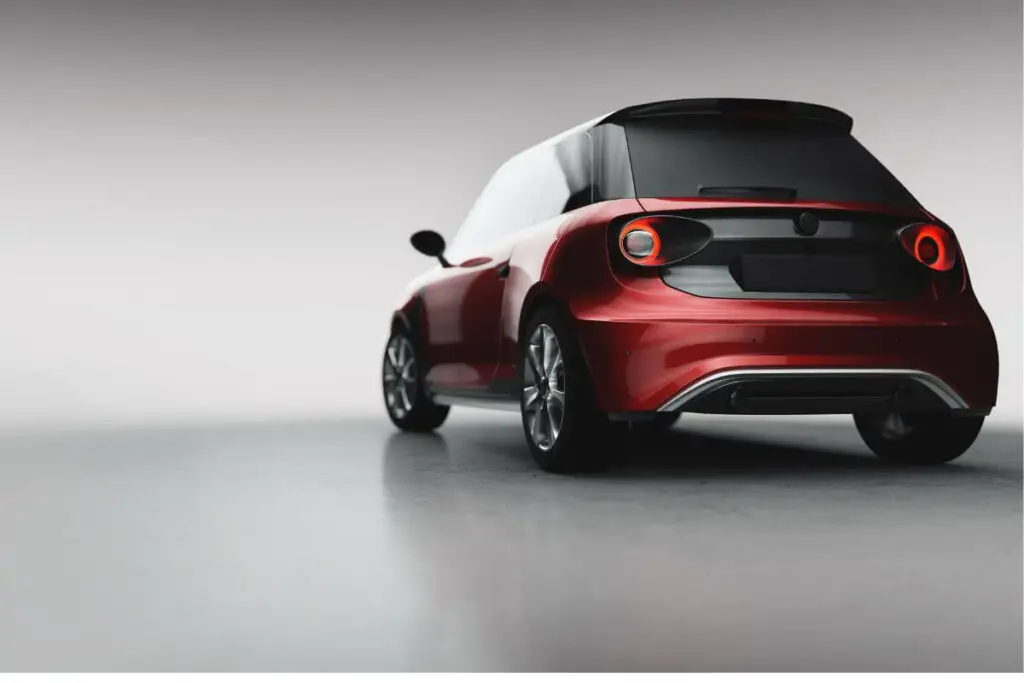
Safety Measures: Handling High Voltage Electrical Components
When it comes to electric vehicles (EVs), handling high voltage electrical components requires special safety measures to ensure the well-being of both end users and technicians. The high voltage electrical system in an EV includes various components such as the electric motor, generator, compressor, inverter, heater, and air conditioner, all of which operate at high voltage levels. Proper handling of these components is paramount to prevent accidents, electrical shocks, and potential hazards.
Importance Of Safe Handling Of High Voltage Components
Safe handling of high voltage components in an electric vehicle is of utmost importance to safeguard individuals from potential dangers. Given the high voltage range at which these components operate, even a slight mishandling or negligence can lead to severe consequences. Here are a few reasons why safe handling of high voltage components in EVs is crucial:
- Preventing electrical accidents: High voltage electrical components can pose a significant risk of electrical accidents if they are not handled properly. Adhering to safety measures eliminates the chances of electric shocks and potential injuries.
- Safeguarding end users: Electric vehicles are designed to provide a safe and eco-friendly mode of transportation. By ensuring safe handling of high voltage components, the risk of any harm to the vehicle’s occupants is greatly minimized.
- Protecting technicians: Proper safety measures not only safeguard end users but also protect technicians working on electric vehicles. Adequate training and safety protocols are essential to handle high voltage components without any risk to the technicians’ well-being.
- Maintaining vehicle performance: High voltage components play a vital role in the performance of an electric vehicle. By handling them safely, the vehicle’s overall performance and efficiency are preserved, resulting in an optimal driving experience.
Implementing Safety Systems And Procedures For High Voltage Electric Systems
Manufacturers and automotive experts implement various safety systems and procedures to ensure the secure operation of high voltage electric systems in EVs. These safety measures aim to mitigate any potential risks associated with high voltage components. Some of the notable safety systems and procedures include:
- Insulation guards: Insulation guards are used to isolate high voltage components from the rest of the vehicle, reducing the risk of accidental contact and electrical hazards.
- Discharge methods: Proper discharge methods are employed to safely release any residual electrical charge within high voltage components before any maintenance or repair work is conducted.
- Contactors: High voltage contactors are used to control the flow of electric current within the system. They are designed to ensure safe engagement and disengagement of the high voltage components.
- Thermal management: Efficient thermal management systems are implemented to regulate the temperature of high voltage components, preventing overheating and potential damage.
By incorporating these safety systems and procedures, manufacturers and technicians can ensure a safer environment for handling high voltage electrical components in electric vehicles.
Conclusion
The main components of an electric vehicle that are considered high voltage include the electric motor, battery pack, inverter, and onboard charger. These components store and deliver high voltage electricity, making them essential for the functioning of an electric vehicle.
It is important to handle these components with caution and adhere to safety regulations when working on high voltage systems in electric vehicles. Understanding and identifying these high voltage circuits and components is crucial for the efficient and safe repair of electric vehicles.
Frequently Asked Questions
What Is Considered High Voltage In A Vehicle?
High voltage components in a vehicle include the battery pack, electric motor, inverter, charger, and traction battery. These components store and handle the high voltage electricity used in electric vehicles.
How Do You Identify A High Voltage Vehicle?
High voltage components in electric vehicles include the battery pack, electric motor, inverter, and onboard charger. These components typically store and distribute high voltage electricity.
What Five Components Are In The High Voltage Traction Battery?
The high voltage traction battery in an electric vehicle typically consists of five components: traction battery pack, DC-DC converter, electric motor, power inverter, and charge port. These components work together to store and deliver high voltage electricity for the vehicle’s operation.
What Is Considered High Voltage Battery?
A high voltage battery in an electric vehicle typically refers to the battery pack that stores high voltage electricity. Other components, such as the electric motor, generator, compressor, inverter, heater, and air conditioner, are also part of the high voltage electric system.

